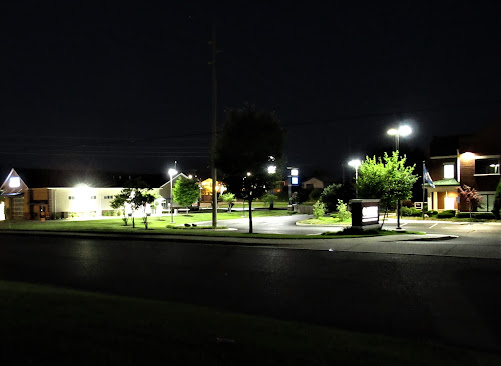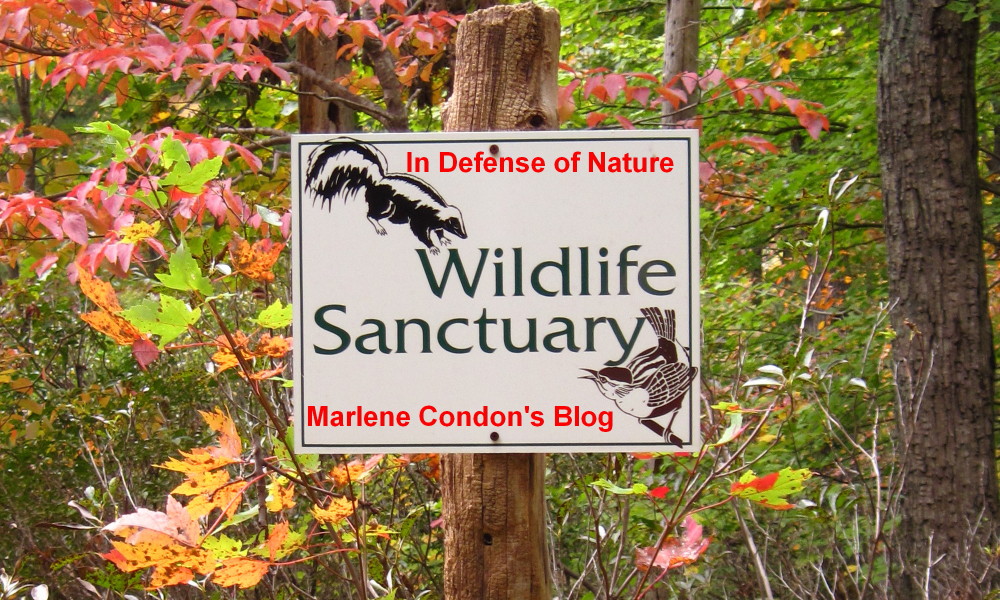Time to See the Light Regarding Loss of Insects and Birds
 |
This Christiansburg, Virginia, plaza could be planted with native trees and still not support caterpillars, thanks to the excessive lighting that is a prime killer of moths. |
ALL TEXT AND PHOTOS © Marlene A. Condon
Originally published in The News-Virginian (Waynesboro, Virginia) on July 16, 2022
On
summer nights, when I was a child, my mother would scream at us kids to quickly
get into the house before all the insects (mainly moths) circling our carport
light had a chance to come inside with us. Nowadays, I can put on my own carport
light with hardly any insects—certainly not moths—coming to it.
The reigning assumption regarding the loss of insects and birds (derived from research published in 2017, “Native plants improve breeding and foraging habitat for an insectivorous bird”,
https://www.sciencedirect.com/science/article/abs/pii/S0006320717305153)
is
that the most crucial step people can take to save the environment is to grow native
plants. But is this theory truly the environmental panacea for our time?
Bringing
Nature Home
by Doug Tallamy also stressed the importance of growing native, rather than
nonnative, plants. In this book, the author showed a nighttime image of the
United States aglow with lights [page 28, 2007 advance reading copy]. He
captioned it, “A composite image from space of the United States at night shows
the extent to which we have converted natural areas [i.e., native plants] to
developed landscapes [i.e., alien plants]”.
True
enough. However, the more ominous takeaway is the dire effect of all those
lights upon insects, especially the moths whose caterpillars have always been essential
to birds raising their young. These larvae are now largely gone because adults
are largely gone. Moths that circle lights all night until they are exhausted,
or where they are easily caught by predators (such as bats and owls), are moths
that don’t reproduce.
Why
am I so sure that lights are the problem rather than a decrease in the number of
native plants? I’ve lived in my home for more than 36 years. My yard has always
been surrounded by mature oak forest, and I’ve watched through the decades the
trees growing so tall that I can no longer view the Blue Ridge Mountains only a
few miles to the west.
Nevertheless,
despite the ever-increasing woody mass of native trees and shrubs around me,
the numbers and kinds of insects and birds have decreased in my yard, just as they
have elsewhere. I’ve never employed pesticides on my property, and I have
gardened in full agreement with Mother Nature (hence my 2006 book on this subject).
The
argument that there’s not enough native woody plants doesn’t work here because mature
forests have comprised a substantial percentage of my property as well as the surrounding
area. In fact, this idea doesn’t apply to much of the eastern United States.
Travel
in a plane between New England and the South or fly in a hot-air balloon over your
local area, and—unless you live in the concrete jungle of a city—you are going
to observe plenty of large native trees in yards, parks, and “natural” (i.e.,
managed) areas.
In
2017, German researchers made world-wide headlines with their paper published
in the journal, Nature, in which they detailed their own discovery of
insects disappearing. Many suggestions have been put forth for the loss, including
such things as pesticides (over 1 billion pounds a year are deployed in the
United States, https://www.brownfieldsummit.com/how-many-pesticides-are-used-in-the-us)
and loss of natural habitat due to development.
None
of these considerations explains the loss of insects on my property over the course
of almost four decades. A more plausible explanation is the ever-increasing number
of lights needlessly burning all night around homes, churches, schools,
libraries, businesses, barns, vineyards, American flags, and in parking lots and
even national parks. Indeed, despite living in a rural area, it’s now difficult
for me to view the Milky Way, thanks to light pollution.
Light
constitutes an insidious menace because its allure to insects is so strong and
its effect upon them so deadly, while people are oblivious to its ramifications.
There’s no harm in growing more native plants, but this action is not going to prevent
the loss of more insects.
If
you truly want to help our insects and birds, you need to shut off lights burning
all night, every night, for no good reason. Then we might see a light at the
end of the tunnel for saving what’s left of our insects and the birds dependent
upon them.
NATURE ADVICE:
In addition to limiting the
amount of time you leave exterior lights burning after dark, you should take
into account the amount of light exiting your windows. This light also attracts
insects and keeps them “glued” to windowpanes instead of reproducing. To
prevent light from escaping your windows, please use curtains or blinds.
And please keep in mind that lighted
yard decorations also contribute to the loss of insects.



